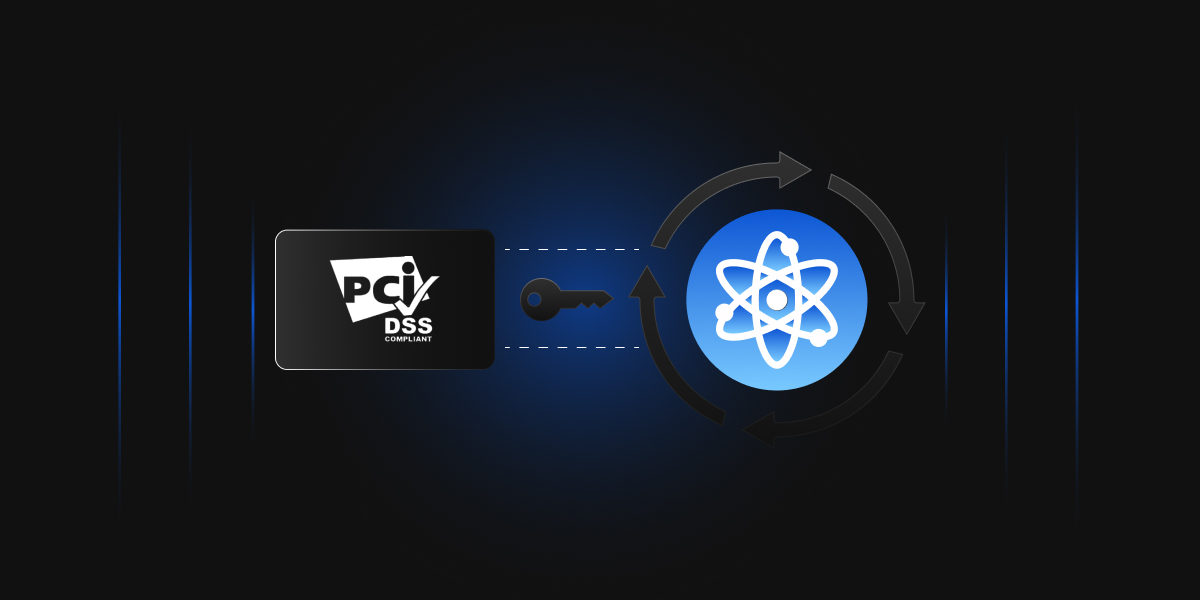As digital infrastructures expand and the software supply chain becomes more intricate, the need for transparency has never been greater. Organizations are not just expected to know what software they’re using, but also how that software is protected. In this context, tools like the SBOM and CBOM are playing a crucial role in enhancing visibility, strengthening security, and supporting compliance efforts across industries. This demand has led to the widespread adoption of SBOM, and more recently, growing interest in CBOM.
CBOM is best understood as an extension of SBOM , while SBOM catalogs the components that make up a piece of software, CBOM focuses entirely on cryptographic elements such as keys, certificates, algorithms, and crypto libraries. With regulators, auditors, and security teams demanding more visibility into cryptographic usage, CBOM is rapidly emerging as an essential piece of the cybersecurity puzzle.
What is SBOM?
A Software Bill of Materials (SBOM) is a detailed record of all software packages, libraries, modules, and dependencies included in an application or system. SBOM consists of:
- Software components
- Version numbers
- Third party information(Libraries or Frameworks)
- Licensing details
- Source repositories
- Interdependencies between components
- Security vulnerabilities such as CVE (Common Vulnerabilities & Exposures)
The purpose of SBOM is to provide visibility into software makeup, much like an ingredient label does for food. It allows companies to track vulnerabilities, manage license compliance, and prepare for software supply chain attacks.
Why SBOM Matters Today?
In recent years, government mandates, especially the 2021 Executive Order on Cybersecurity in the U.S. have made SBOMs a requirement for federal software vendors. This move came after a wave of software supply chain attacks, where malicious or vulnerable components in widely used packages compromised thousands of systems.
An SBOM helps companies:
- Identify and assess vulnerable libraries
- Ensure open-source compliance
- Accelerate incident response
- Improve vendor accountability
However, while SBOMs offer essential visibility into software components, they often fall short when it comes to understanding how those components are secured. Most SBOMs do not capture details about cryptographic implementations such as what algorithms are used, how keys are managed, or whether expired certificates exist. This is where CBOM (Cryptographic Bill of Materials) becomes critical, providing deeper insight into the security posture of an application beyond just its components.
So let’s dive into the concept of CBOM and understand why you need to implement it.
What is a CBOM?
A Cryptographic Bill of Materials (CBOM) is a structured inventory that details every cryptographic asset in an organization’s software and systems. This includes encryption algorithms, digital keys, certificates, crypto protocols, and supporting libraries.
Key Components of CBOM
A Cryptographic Bill of Materials (CBOM) provides deep visibility into how cryptography is implemented across software and systems. It tracks a wide range of security-relevant details, including:
- Cryptographic Algorithms: Documents the use of encryption and hashing algorithms such as AES, RSA, ECC, and SHA-256, helping assess algorithm strength and compliance relevance. This visibility becomes especially valuable when planning a transition to PQC(post-quantum cryptography), as CBOM helps identify legacy algorithms that may be vulnerable to quantum attacks.
- Key Information: Includes data on cryptographic key types (symmetric/asymmetric), key lengths, usage policies, and lifecycle stages, covering generation, storage, rotation, and destruction.
- Certificates: Tracks digital certificates in use (e.g., TLS/SSL certificates, code-signing certificates, client authentication certificates), their issuing authorities, and expiration timelines to avoid trust failures.
- Protocols: Details cryptographic communication protocols like TLS, SSH, and IPsec, ensuring secure data in transit and identifying outdated or misconfigured protocol usage.
- Cryptographic Libraries: Captures versions and implementations of crypto libraries such as OpenSSL, BoringSSL, BouncyCastle, and Microsoft CryptoAPI, key for patch management and vulnerability tracking.
- Algorithm Parameters: Specifies critical parameters like key sizes, modes of operation (e.g., CBC, GCM), padding schemes, and initialization vectors (IVs), which influence encryption effectiveness.
- Cryptographic Modules: Identifies hardware and software modules used for cryptographic operations, including Hardware Security Modules (HSMs), Trusted Platform Modules (TPMs), and smartcards.
- Validation & Compliance Status: Indicates whether the cryptographic components comply with standards such as FIPS 140-3, Common Criteria, or industry-specific requirements, crucial for regulated environments.
CBOM vs SBOM: Core Differences
| Feature | SBOM | CBOM |
|---|---|---|
| Focus Area | Software modules and dependencies | Cryptographic elements and controls |
| Purpose | Track vulnerabilities, licenses, and updates | Secure encryption usage and enforce crypto hygiene |
| Primary Users | Developers, DevOps, AppSec teams | Security architects, crypto owners, compliance leads |
| Sample Entries | Apache Struts, Log4j, React | RSA-2048, TLS 1.2, expired x.509 cert, SHA-1 hash |
| Regulatory Relevance | Executive Order 14028, NTIA SBOM specs | PCI DSS 4.0, NIST 800-57/175B, CNSA Suite |
| Tooling Maturity | Mature tools and standards (SPDX, CycloneDX) | Emerging tools; standardization still in progress |
| Use Cases | Vulnerability and patch management – Software supply chain auditing – Open-source license tracking | Cryptographic compliance (FIPS, PCI DSS) – Certificate lifecycle management – Encryption algorithm risk assessment |
Why Organizations Are Turning to CBOM?
-
Encryption Is Everywhere, But Rarely Understood
Encryption is embedded in nearly every aspect of modern IT, from web traffic to authentication to cloud storage. Despite this, most organizations lack a clear view of:
- What cryptographic libraries are in use
- Where and how encryption keys are deployed
- Whether algorithms used are compliant and secure
- Whether certificates are valid and rotated
This lack of clarity creates a significant blind spot in security and compliance efforts. CBOM directly addresses this gap by enabling organizations to build and maintain a comprehensive cryptographic inventory. It brings much-needed visibility into how cryptography is implemented, helping security teams uncover weaknesses, reduce risk, and enforce best practices across the enterprise.
-
Regulations Are Tightening Cryptographic Controls
Security frameworks are getting stricter about encryption. For example:
- PCI DSS v4.0 mandates strong encryption and proper key management across the cardholder data environment.
- NIST 800-57 and 800-175B provide guidelines on key lifecycles and algorithm suitability.
- NSA’s CNSA Suite defines minimum encryption standards for protecting sensitive federal data. It replaces the older Suite B Cryptography and outlines stronger cryptographic algorithms to be used across national security systems.
CBOM helps by tracking algorithm usage, documenting key properties, and ensuring adherence to prescribed controls.
-
Preparing for Post-Quantum Transition
Quantum computing is poised to render traditional cryptography obsolete. Public-key methods like RSA and ECC will no longer be safe. Organizations will need to replace their crypto quickly. In simple words, global security standards are evolving to include PQC as a new class of cryptographic algorithms designed to resist attacks by quantum computers.
But migrating to PQC is not that simple as most organizations do not have a clear understanding of where and how cryptographic algorithms are used across their systems. This lack of visibility poses a major risk when planning a transition.
So before migration can happen, they must know:
- Where RSA or ECC is being used
- What libraries depend on them
- What systems support post-quantum algorithms
CBOM provides the foundational inventory needed to prepare for this transition, including:
- Clarity on Cryptographic Dependencies: You can identify exactly where RSA, ECC, SHA-1, or other potentially deprecated algorithms are being used.
- Awareness of Legacy Risks: Many systems still rely on outdated or weak cryptography. CBOM highlights these areas so they can be prioritized for replacement.
- Readiness for Migration: Before implementing PQC, organizations must ensure their systems and libraries can support new algorithms. CBOM helps map that compatibility landscape.
- Simplified Compliance: CBOM helps satisfy growing regulatory and industry demands for crypto transparency, such as PCI DSS v4.0 and upcoming PQC-readiness requirements.
-
Better Response to Crypto Vulnerabilities
When vulnerabilities like Heartbleed (OpenSSL) or Logjam (DH key exchange) surface, teams need immediate answers:
- Is this vulnerability present in our environment?
- Which systems are affected?
- How quickly can we patch?
Heartbleed was a critical vulnerability in certain versions of OpenSSL (2014) that allowed attackers to read sensitive memory content including private keys and passwords, by exploiting a flaw in the TLS heartbeat extension.
Logjam, discovered in 2015, exploited weaknesses in the Diffie-Hellman (DH) key exchange by forcing servers to downgrade to weaker 512-bit encryption, making it easier for attackers to decrypt secure communications.
In both cases, organizations scrambled to assess impact but lacked centralized visibility into where vulnerable libraries or algorithms were being used. CBOM addresses this gap by providing a clear, up-to-date inventory of cryptographic components across your systems, allowing teams to immediately locate and respond to affected assets. Instead of spending days manually scanning infrastructure, teams can pinpoint risk exposure in minutes.
Benefits of CBOM to the Industry
CBOM goes beyond checklist compliance. It enables foundational improvements across all aspects of security, risk management, and governance.
Enhanced Crypto Hygiene
CBOM helps eliminate:
- Weak algorithms like MD5 or SHA-1
- Deprecated protocols like SSLv3 or TLS 1.0
- Misused keys or certificate misconfigurations
This improves the overall security posture and reduces the risk of compromise.
Accelerated Incident Response
When vulnerabilities or zero-day threats emerge, having a CBOM means organizations can:
- Instantly locate affected systems
- Prioritize updates and patches
- Prove to auditors that steps were taken
This reduces both downtime and reputational risk.
Reduced Shadow Crypto
CBOM helps discover unauthorized or unknown cryptographic assets (“shadow crypto”) that may have been implemented by individual teams or legacy applications without central approval.
By identifying and managing shadow crypto, organizations avoid using unvetted or insecure encryption methods.
Improved Key Management
Key sprawl is a real problem in cloud-native environments. With CBOM, organizations can track:
- Key ownership
- Expiration timelines
- Usage scopes
- Compliance with key length and rotation policies
Future-Proofing Against Post-Quantum Threats
CBOM is the foundation for any post-quantum transition plan. It allows teams to:
- Identify where traditional algorithms are used
- Plan replacement strategies with PQC algorithms
- Avoid last-minute remediation under pressure
Challenges in Adopting CBOM
Despite its benefits, CBOM adoption comes with challenges:
-
Lack of Standards
Unlike SBOM, which benefits from well-established formats like SPDX and CycloneDX, CBOM is still in its early stages. No universal format or tooling has emerged yet.
-
Tooling and Automation
Identifying cryptographic elements is more difficult than identifying software components. Organizations need tools that can parse binaries, scan infrastructure, and detect crypto usage automatically.
-
Organizational Ownership
Who owns cryptography? Security? DevOps? Engineering? Legal? Organizations must establish clear roles and processes for managing cryptographic inventories across teams.
Best Practices for Successful CBOM Adoption
Despite these challenges, organizations can make meaningful progress with the right strategy. Here are key best practices:
-
Start with High-Risk and High-Value Systems
Prioritize CBOM discovery for systems that:
- Handle sensitive or regulated data (e.g., financial transactions, PII)
- Are internet-facing or business-critical
- Have compliance mandates (e.g., PCI DSS, FedRAMP, FIPS)
This allows organizations to focus efforts where crypto visibility matters most.
-
Leverage Existing SBOM Infrastructure
If you already generate SBOMs using tools like Syft, OWASP Dependency-Track, or CycloneDX:
- Extend those pipelines to also extract cryptographic libraries
- Map discovered libraries (e.g., OpenSSL, Bouncy Castle) to potential crypto usage
- Integrate with external scanners that add crypto-layer insights
This bridges the gap between SBOM and CBOM until native CBOM support becomes mainstream.
-
Use Specialized Cryptographic Discovery Tools
Adopt tools that can:
- Parse binaries and source code to detect crypto APIs and algorithms
- Inventory TLS configurations, certificates, and key stores
- Monitor for usage of deprecated or weak algorithms (e.g., SHA-1, RSA-1024)
-
Define Ownership and Governance
Establish a Cryptography Working Group or designate a Crypto Steward responsible for:
- Managing the cryptographic inventory (CBOM)
- Defining crypto lifecycle policies (e.g., rotation, expiration)
- Responding to crypto-related vulnerabilities or audits
- Preparing for post-quantum transitions
Formalizing ownership ensures crypto isn’t treated as an afterthought
-
Integrate CBOM into Compliance and Audit Frameworks
Map your CBOM efforts to requirements like:
- PCI DSS 4.0 Requirement 12.3.3 (inventory and management of cryptographic assets)
- NIST 800-53 / NIST 800-175B (crypto control baselines)
- Zero Trust Architecture principles (explicit trust, asset validation)
This reinforces CBOM as not just a technical tool, but a compliance and risk-management enabler.
Future Trends in CBOM
As cryptography becomes central to cybersecurity, privacy, and regulatory compliance, the concept of CBOM is expected to evolve rapidly. Here are the key trends shaping the future of CBOM:
Standardization and Interoperability
The future of CBOM heavily depends on the development of standardized formats and interoperable frameworks. Currently, there’s no universally accepted way to define or share a CBOM. However, organizations like NIST, ISO, and open-source communities are likely to drive efforts toward creating structured schemas and consistent formats.
Integration with SBOM Platforms
Instead of existing as isolated artifacts, CBOMs will likely be embedded within SBOMs or be tightly linked to them. As SBOM tools mature, many will begin including cryptographic metadata as part of their default output. This integration will provide a more holistic view of software security by detailing both software components and the cryptographic methods securing them.
Automation and CI/CD Integration
As environments grow more complex, manual generation of CBOMs will no longer be practical. The industry is moving toward automated discovery of cryptographic assets, including embedded libraries, algorithms, and keys. These tools will be integrated into CI/CD pipelines, enabling automatic CBOM generation during the software build or deployment process.
Post-Quantum Cryptography (PQC) Readiness
With the advent of quantum computing, organizations must prepare to transition to post-quantum cryptographic algorithms. Future CBOMs will play a key role in identifying where vulnerable algorithms like RSA and ECC are used. CBOMs will include data that shows whether an algorithm is quantum-safe or considered at risk, helping security teams prioritize upgrades and remediation well before quantum attacks become practical.
Regulatory and Compliance Adoption
As regulatory frameworks evolve, CBOM is poised to become a mandatory part of compliance documentation. Standards like PCI DSS v4.0, FIPS 140-4, and the EU’s Cyber Resilience Act are already beginning to emphasize cryptographic controls. We’ve already talked about one of the important requirement of PCI DSS on CBOM in our previous blog.
In the near future, audits may specifically require evidence of cryptographic inventories, making CBOMs essential for demonstrating compliance with emerging cybersecurity laws and industry standards.
How can Encryption Consulting help?
In this blog you have heard enough about PQC readiness, don’t worry we’re here to help with that. We provide PQC Advisory Services to prepare you for the quantum era ahead and help tranistioning with PQC aswell. Before you can migrate to post-quantum algorithms, you need a clear, accurate inventory of all cryptographic assets in your environment. Our Compliance Services help you build this inventory, by thoroughly analyzing your infrastructure and identifying gaps, giving you the visibility needed to move forward with confidence.
Here’s how we support your transition and CBOM readiness:
- Comprehensive Cryptographic Inventory: We identify where encryption is used, what algorithms and libraries are involved, and how cryptographic elements are configured in your environment.
- Risk Identification: Our analysis pinpoints deprecated algorithms, weak configurations, expired certificates, and undocumented cryptographic implementations.
- PQC Transition Planning: We help map your current usage of RSA, ECC, and other vulnerable schemes to prepare a phased migration plan aligned with NIST’s post-quantum recommendations.
- Expert Support: Our team of experts are here to guide you through every challenge, from inventory creation to PQC migration and beyond.
Conclusion
SBOM has laid the groundwork for transparency in the software supply chain. Now, CBOM is stepping in to do the same for cryptography. As encryption becomes more critical to data security, compliance, and privacy, understanding and managing your cryptographic landscape is no longer optional, it’s essential.
CBOM enables organizations to:
- Map their cryptographic usage
- Identify and eliminate weak or risky implementations
- Prove compliance with emerging standards
- Prepare for the transition to post-quantum cryptography
While CBOM is still a maturing concept, it’s quickly becoming a strategic requirement for any security-conscious enterprise. In a digital world where encryption is everywhere, knowing what cryptography you use and how you use it, could be the key to protecting your most valuable assets.




